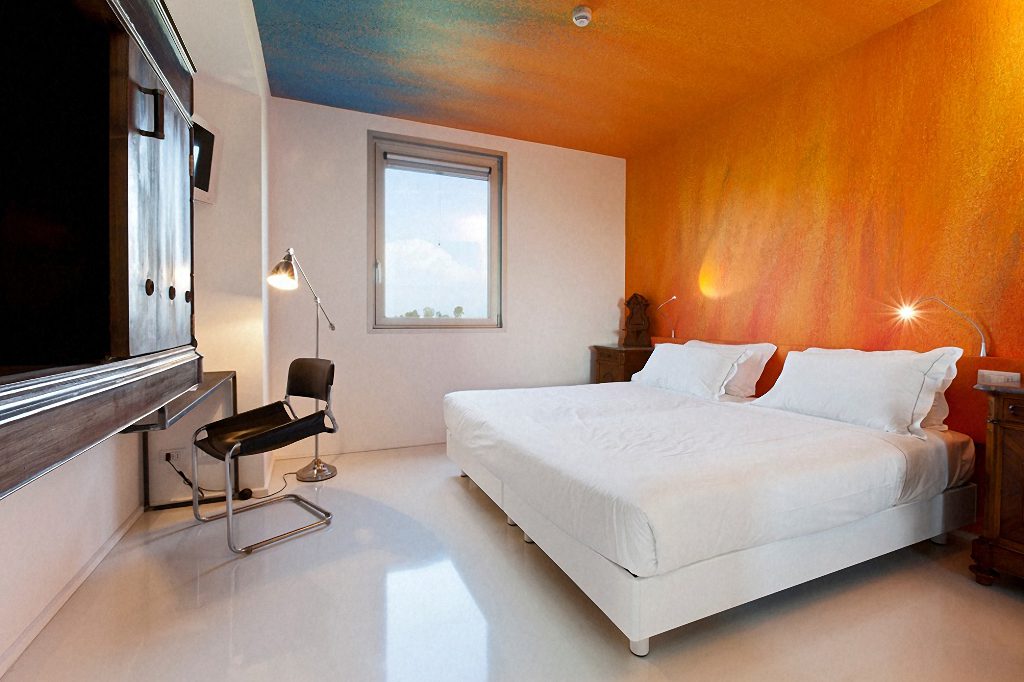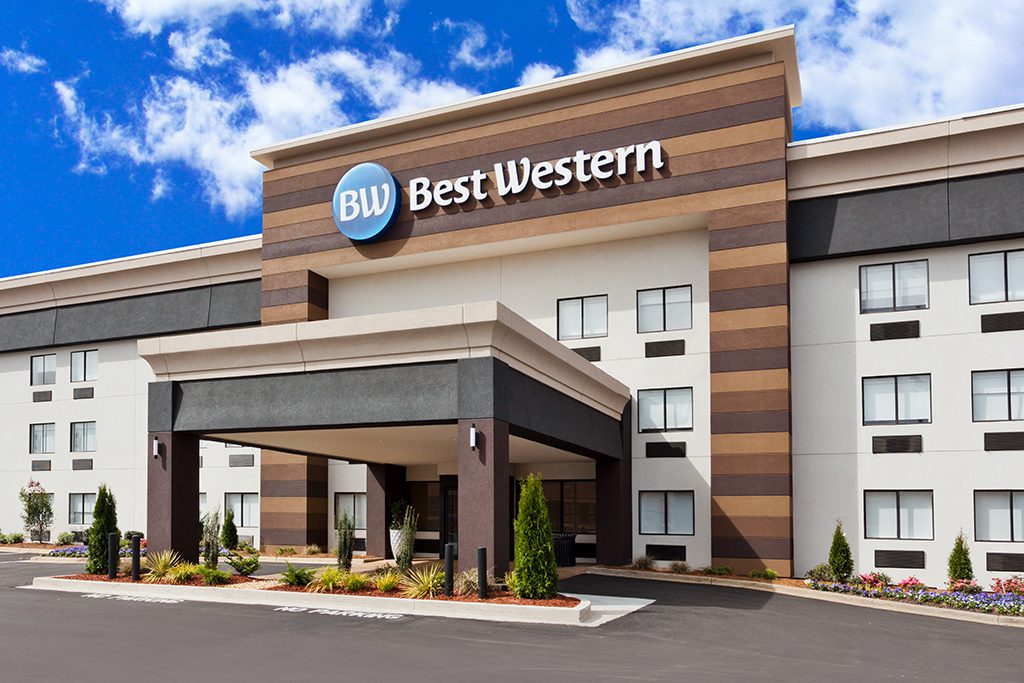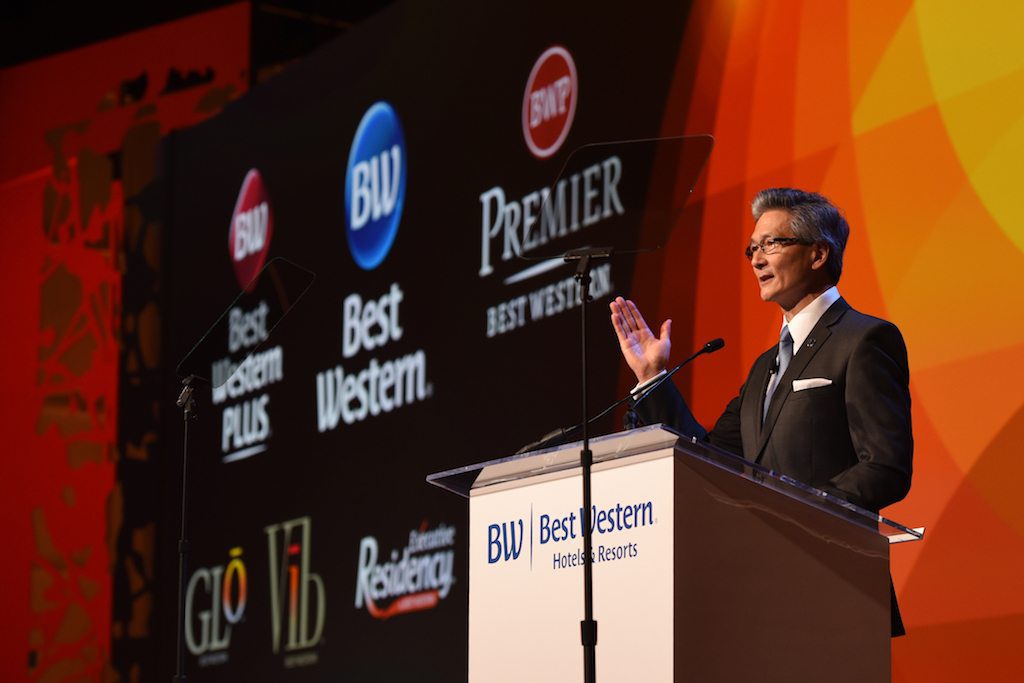Skift Take
Best Western's unique longstanding model gives much power to its member hotels. But as changes quickly alter the industry's landscape, can the chain still compete effectively under the old ways?
Best Western Hotels & Resorts last summer asked its North American member-owners to agree to convert the company from a nonprofit to a for-profit enterprise.
The members voted it down.
It was a disappointment for Best Western’s top management, who believed becoming a for-profit company could help it compete with Marriott, Hilton, IHG, and other major hotel companies.
So it goes at Best Western, truly an anomaly in the rapidly changing hotel industry. With one of the longest-serving CEOs in the travel industry, it’s easy to see how 74-year-old Best Western could be perceived as archaic, or even a relic from a Mad Men-era of roadside motels. Privately held, the company is complicated to outsiders, and its unique structure is what may very well be holding it back, say some company executives and industry analysts.
Longstanding CEO David Kong saw becoming for-profit as a way for the company to make the types of investments that its rivals are making, which in turn would attract investors and help Best Western grow. Members would have continued to have a stake in the company and maintain their influence, Kong reasoned.
“Scale is very important today,” Kong told Skift. “You look at Marriott and Hilton. Because of their scale, they can afford to make a lot of investments in a lot of areas. When you don’t have scale, you can’t make those investments and you can’t drive the kinds of results they can drive. Over some time, the distance between Hilton and Marriott to Best Western grows bigger and bigger, and it becomes more and more difficult for us to catch up.”
Since acquiring WorldHotels in 2019, BWH Hotel Group, the umbrella organization to Best Western Hotels & Resorts and WorldHotels, has tried its best, growing to 4,700 hotels and 18 brands in more than 100 countries.
That is still not enough to match Marriott with its more than 6,500 hotels and 30 brands and Hilton with its more than 5,700 hotels, though Best Western does rival Hilton with 18 brands. Wyndham Hotels and Resorts has about 9,300 properties over 20 brands.
BWH Hotel Group, and its flagship Best Western, is a distinct company among the major players in the industry. As a nonprofit, all the money it makes goes back into the company, not to shareholders. It does not trade on the stock market. It does not release earnings reports.
A rare glimpse into its financials from government filings related to its for-profit vote revealed that Best Western had annual revenues of $433.5 million in 2018 (a 12 percent jump from 2017), and had its highest revenue per available room (RevPAR) at its Best Western Premier brand of $85. This was, of course, before its acquisition of WorldHotels. As a comparison, the industry’s largest player, Marriott, posted last week annual revenues for 2019 of nearly $20 billion. Average worldwide room revenue in 2019 was $117.30.
Best Western seems to be stable, judging by Kong’s nearly 16-year tenure and the longevity of other top executives such as Chief Marketing Officer Dorothy Dowling, who has also been there for almost 16 years.
BWH Hotel Group and Best Western, of which Kong is also CEO, are unlike Marriott and Hilton in many ways, chief among them is the fact that the company licenses its brands to owners who become members of the organization. Most hotel companies franchise their hotels, and their owners often are part of associations that can voice their opinions on major issues such as brand standards but don’t necessarily have the final say on decisions.
Best Western’s members, on the other hand, usually get to vote on matters. Or at least their governors and directors do. Best Western has a board of directors comprised of one person from each of its seven regions. Each region has governors. In all, the company has about 180 governors.
When Best Western’s member-owners voted against going the for-profit route, there wasn’t much that Kong could do about it. He does not plan to resurrect the idea.
“I’ve always said that membership, through their votes, have expressed themselves and you have to respect that,” Kong said.
Despite the challenges that having a membership-based organization can pose, Kong insists that the model works. The average amount of time that a member stays with the company is 18 years, he said.
“Our members are very loyal,” said Kong. “Our members are the only stakeholders in our company. They care more and they’re far more passionate than the typical franchisee … They feel that this is their organization, whereas in a franchisee setup they’re just one of many franchisees and they don’t have that special connection to the brand, therefore they’re not as passionate and they don’t care that much.”
Sometimes, though, they have too much passion. Kong readily admitted that.
“I can’t say it hasn’t been frustrating, and it’s hard to build consensus when you have a members organization, but in the end, it’s always worked,” Kong said.
“Our hoteliers have a voice,” he added. “Sometimes, our strategies take longer to flesh out and implement, but at the same time, because it’s been fleshed out, it’s more on target.”
Humble Beginnings
Best Western began in 1946 as Best Western Motels, an informal link between properties in which hotels would recommend other establishments to travelers. It was a referral system conducted over phone calls from one front desk to another.
When M.K. Guertin, who had been a hotelier for 23 years, founded the company, it was considered a revolutionary concept for the industry. Its reservations service was covering the entire United States by 1962, and the company adopted a logo that would become recognizable for years. It was made up of an image of a crown with a rope border to identify its member properties, in a public show of how integral to the company those members were.
It had become the largest motel chain in the industry by 1963 with 699 member properties and 35,201 rooms. The following year, a group of motels east of the Mississippi River was incorporated into the system as Best Eastern Inc.
The membership structure became much more formalized in 1966 when all the owners of Best Western and Best Eastern united under the Best Western name. The board of directors was elected. Company headquarters moved from Long Beach, California, to Phoenix to centralize operations and expand the membership.
Then came the big changes. The company introduced a new reservations system using a toll-free number. Satellite offices opened in other cities in North America. The growing chain made partnerships with airlines and other travel industry companies.
Best Western in the next decade decided to change its image. The company eliminated the word “motel” from its name in 1974 and ended its referral model. It started expanding internationally, entering markets as far away as Australia and as close as Mexico.
European openings followed and by 1993, the brand was in Japan and Russia. To usher in this new era of development, members retired the gold crown and approved a new logo. More international expansion followed as well as the introduction of high-speed internet and by 2005, Best Western was averaging $1 million in bookings a day on its direct website.
Around that time, hotel companies decided that they had to give guests more options and introduce new brands. Members voted in 2011 to expand the family to Best Western, Best Western Plus, and Best Western Premier.
As other companies introduced a wide variety of brands with names that it hoped would attract the changing and younger clientele, Best Western joined the fray.
Vib, an urban boutique concept, was created in 2014. BW Premier Collection, a soft brand of high-quality hotels around the world, also came that year.
Glo, a midscale boutique brand for new construction properties in secondary, suburban, and highway markets, followed in 2015. Boutique brands Sadie and Aiden launched in 2018.

A room at the Aiden by Best Western @ JHD Dunant Hotel in Castiglione Delle Stiviere, Italy, near Lake Garda. Photo: Best Western Hotels & Resorts
Kirby Payne, president of HVS Hotel Management and HVS Hotel Asset Management, said that creating the new brands was “a good strategy because at the end of the day they have so many different kinds of properties that you didn’t know what a Best Western was,”
“By segmenting it, they began to solve their confusion problem,” he said.
To make the company seem more global, members once again voted for new logos, with each brand getting its own distinctly modern ones.
It seemed like a small change, but to the members it signaled a big shift for the company. Payne recalls how difficult a process it was to make changes to logos and brand standards.
“It’s a very complicated organization, there’s no question about that,” said Payne, who is also a former chairman of the American Hotel and Lodging Association.
“The owners clearly want the brand to do well, and they want the brand to be recognized and be positive about it and to have all the good things all the other brands have,” Payne said. “But at the end of the day, they all have a little bit of self-interest in the deal, which creates conflict.”
Payne thinks Kong has somehow figured out how to manage it all.
“David Kong has definitely tried to make the company more efficient and modern in many, many ways,” he said. “He’s sold a lot of positive ideas to the board and to the members. He’s one of the people in the industry who is really a listener, and you’ve got to have the patience of a saint to run that organization.”
Membership Has Its Privileges
Ishwar Naran, CEO of Premier Resorts and Management, is vice chair of the board of directors of Best Western, representing members in Florida, Tennessee, Alabama, Georgia, South Carolina, North Carolina, Puerto Rico, and Haiti. He owns three Best Western hotels, but he also has brands from Best Western’s biggest competitors such as Marriott and Hilton.
He is happy with all his brands but does prefer certain aspects of the Best Western model.
“It’s a day-and-night difference in my opinion,” he said. “In Best Western, we have a lot more voice compared to other brands. The other brands have ownership associations. The ultimate decision is made, in my opinion, for the benefit of stockholder, whereas at Best Western, the decision is made for the benefit of the membership. Voice is very important.”
Members, especially those who have been with the company longer, also pay lower fees. In a franchise model at any company, franchisees have to pay for the right to wave the brand flag.
Best Western is also careful about not allowing too many of the same brands to be located close to each other and compete with other members. Naran said the company will pay for impact studies to determine if they should allow properties to enter the brand family.
“We want it to grow in a very responsible way,” Naran said. “We want it to grow but not at the cost of the membership. That’s why we have different brands and different products. It’s the future, in my opinion, and the consumer has accepted it very well.”
Growth is definitely in the plan, especially internationally. According to industry research firm STR, 115 properties are at some point in the construction process internationally. That will mean 10,833 new rooms will be added outside the U.S.
“The strength of your pipeline is a good barometer of what new owners think of your state and your brand, and they want to join ones that they think are good returns on their investment and offer attractive services, whether its reservation systems, competitive fee structures, or a larger say in how the company is run, which certainly Best Western, I would say is more so than other companies,” said Patrick Scholes, an analyst at SunTrust Robinson Humphrey.
For now, Kong is okay with his company’s arrangement. Other than starting new brands, Best Western also bought property management software company AutoClerk last year in the hopes of combining it with its own central reservation system. That would provide more up-to-date pricing and accurate room inventory information.
“You have to accept it for what it is,” Kong said. “You cannot let it tank you. You have to find ways to compete. That’s why we’re known as the scrappy brand. We don’t have the kind of money to spend that they have, but we are extremely elevated.”
Have a confidential tip for Skift? Get in touch
Tags: best western, boutique hotels, budget hotels, hospitality
Photo credit: A Best Western property in Montgomery, Alabama. BWH Hotel Group, the umbrella organization to Best Western Hotels & Resorts and WorldHotels, is unique among large hotel chains in that it operates as a nonprofit enterprise with member-owners. Best Western Hotels & Resorts

